Candle Making Key Terms Explained
Burn Pool

The burn pool of a candle is the pool of molten (melted) wax surrounding the wick, it is this wax that is drawn up through the wick and combusted via the flame. As you can see by this picture the melt pool covers the entire candle and therefore you are getting the maximum burn time and efficiency out of your candle. There is no wasted wax at the sides and this will burn down evenly. If you find that you have a mushrooming wick as well as a melt pool this size, you may want to downsize your wick. (See: Mushrooming)
However, if the flame is small and struggling to stay alight, it means the wick is drowning and therefore you may want to wick up. (See: Drowning Wick)
Sometimes, the melt pool is too small for the candle causing the wax to tunnel (See: Tunneling)
Cruelty Free

Ingredients and finished products that are not tested on animals. Fortunately, the vast majority of products within our industry now meet this definition.
Cracks in the Candle
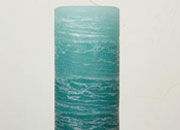
A candle that cools way too quickly can cause cracks/frost lines (See: Frosting) on the exterior of the candle. Sometimes this can be done intentionally to obtain a specific aesthetic effect (as shown in the picture). If you want to achieve this look we would recommend cooling the candle in a fridge or
freezer.
Drowning Wick
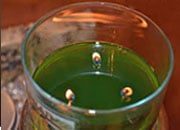
A drowning wick occurs when either the wick is too small, or it is getting clogged up because there is too high a concentration of dye or fragrance in the wax causing the wick to struggle. If this happens to you, try a larger wick or less fragrance next time round.
Flame too Big or Small

If your flame is too large this can be because the wick itself is too big, so you can avoid that by either using a smaller or by ensuring that the wick has been trimmed down to about a centimetre above the candle.
On the other hand, if the flame is too small you may need to use a larger wick. A flame that is ½ – ¾ of an inch high will prove to be the perfect size.
Flickering/Sputtering Flame

This occurs when there is air trapped in either the wick or the wax. Be careful when melting the wax to ensure that no water from the double boiler finds its way into the wax. Likewise, when waxing your raw wicks make sure that there is no air left in the wick. Another fix for this could be to wick up.
Frosting

Frosting occurs whenever your wax cools too quickly, this can cause the nominar ‘frosting’ effect as seen in the picture, or visible cracks (See: Cracks In Candle) and can be very annoying when unplanned. In this instance, a way to solve this is to reheat the sides of the candle either by dipping it into a hot water bath or even using a hair dryer.
Organic

This term can sometimes be over-used by retailers, and it means: a product that’s made from natural sources and grown and processed without the use of any chemical pesticides as well as a list of several other ingredients.
Fun fact: the definition of ‘organic’ varies in different countries? In the US, ‘organic’ is defined by the USDA – NOP.
Facilities that are used to make organic products must be certified and adhere to very strict protocols to ensure the integrity of organic products.
Made With

A product fragrance that contains some natural essential oils or natural fragrance ingredients”. The fragrance has added essential oils.
Natural Identical

Synthetic version of a natural ingredient. Chemically identical to what is found in nature but made by synthetic means.
Many natural fragrance ingredients are becoming very scarce and are difficult to reliably sourced. By using synthetic equivalents it is possible to ensure the highest consistent quality while protecting the environment, something we are committed to.
Naturally Derived

Definition: Materials in the product can be the same as those found in nature or synthetic but must be made from naturally sourced materials.
The good news is that many of the raws our suppliers sell are already naturally derived!
Re-pour Not Blending

When the re-pour doesn’t blend with the original pour this can be because you have poured the wax at a different temperature to the first one.
You need to re-pour the wax at the same temperature and whilst the candle is still warm and not fully hardened.
However, if you’re still having issues with blending you can fix this by heating the wax with a hair dryer.
Sink Hole
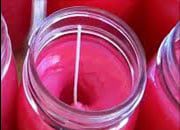
As a candle cools it naturally shrinks, this is normal and unavoidable. There are ways that you can help reduce the amount your wax shrinks. For example, try warming the mould or container prior to pouring your wax into it. Pour your wax at a lower temperature meaning some of the shrinking has already occurred.
You will need to do a re-pour to fill in your sinkhole as the candle starts solidifying. Sometimes you will need more than one re-pour.
Smoking Candle Flame

There are a few things that can cause your flame to produce smoke, for instance, a wick that is too large can cause the wax to become too hot, or perhaps there is too much fragrance and dye mixed in the wax causing the combustion of the gases and chemicals to struggle.
If your candle is lit in a drafty area the smoking can be caused by non-combusted soot (carbon particles). This happens because the draft is cooling the gases before they are oxidised into the atmosphere, therefore the gases are realised as a soot.
Fun fact: this is also the reason why a wick smokes when it is blown out; it is the release of all the non-combusted soot that has been rapidly cooled.
Sustainably Sourced

Ingredients must be sourced from renewable sources. There are different NGOs that will certify for sustainability. Some materials such as palm oil have specific certification such as RSPO (Roundtable for Sustainable Palm Oil).
Tunneling

This is where the wax doesn’t melt evenly and therefore reduces the overall melt time of the candle. This is a sign of a less efficient burning candle which can be caused by the wick being too small or the wax is too hard. (See: Melting Pool)
Vegan & Vegan Friendly

Vegan means that the raw materials used to make a product must come from plant-based sources. But, did you know that this can also include materials that are synthetic as long as all of the raw materials come from plant-source? This is more sustainable for the environment.
Vegan Friendly: Like Vegan but can also include petrochemically derived materials as long as they don’t come from animal sources.
Wet Spots or Air Bubbles
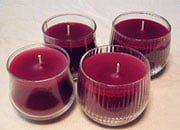
This is caused when the wax closest to the container is cooled too quickly and therefore shrinks and pulls away from the jar.
You can minimise the effects by warming the glass and cooling the candles at a warmer room temperature. Pouring the wax at a hotter temperature may help as well as pouring it slowly and carefully. Tapping the mould and the container can also help to release the bubbles.
Find us online:







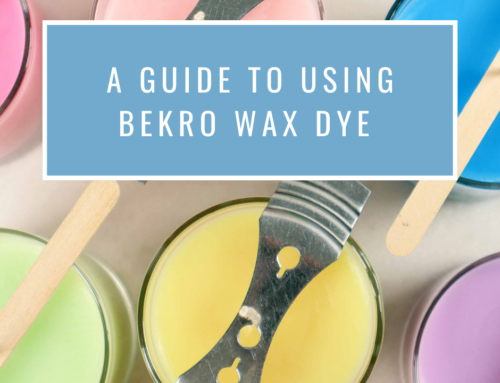


Leave A Comment